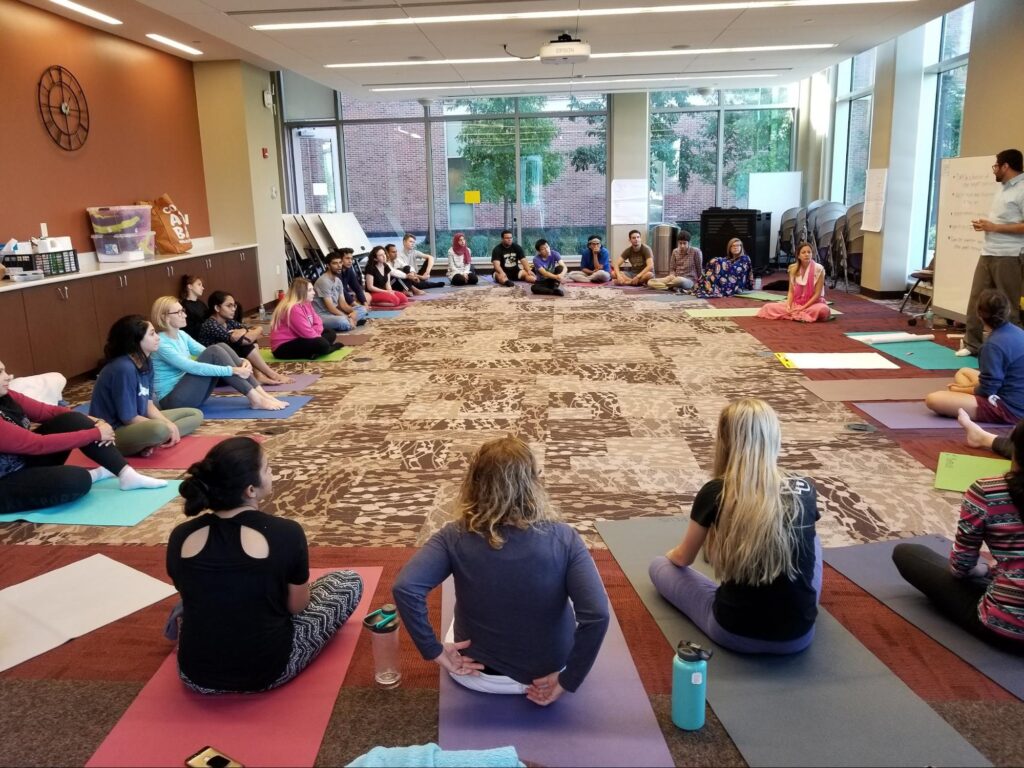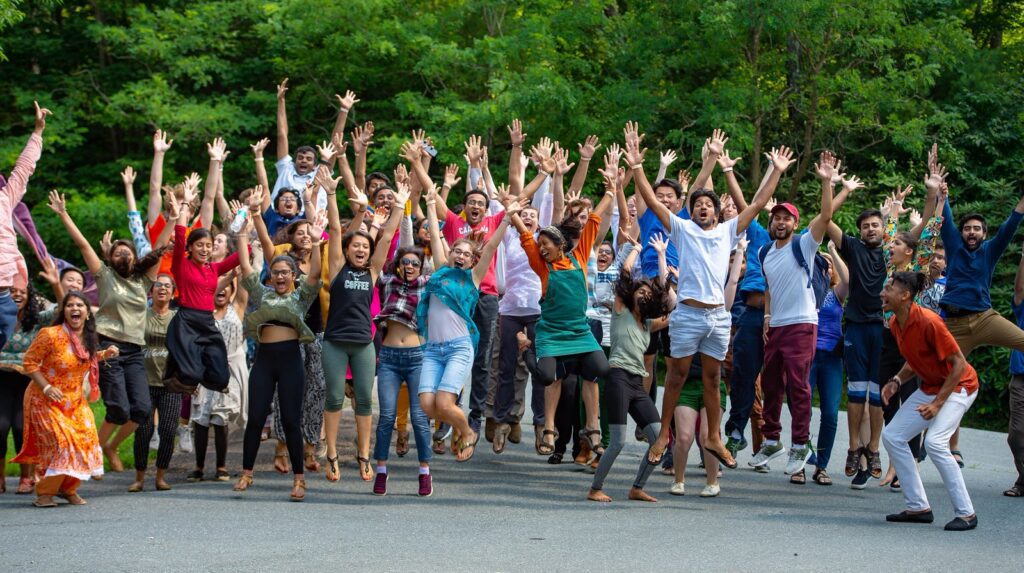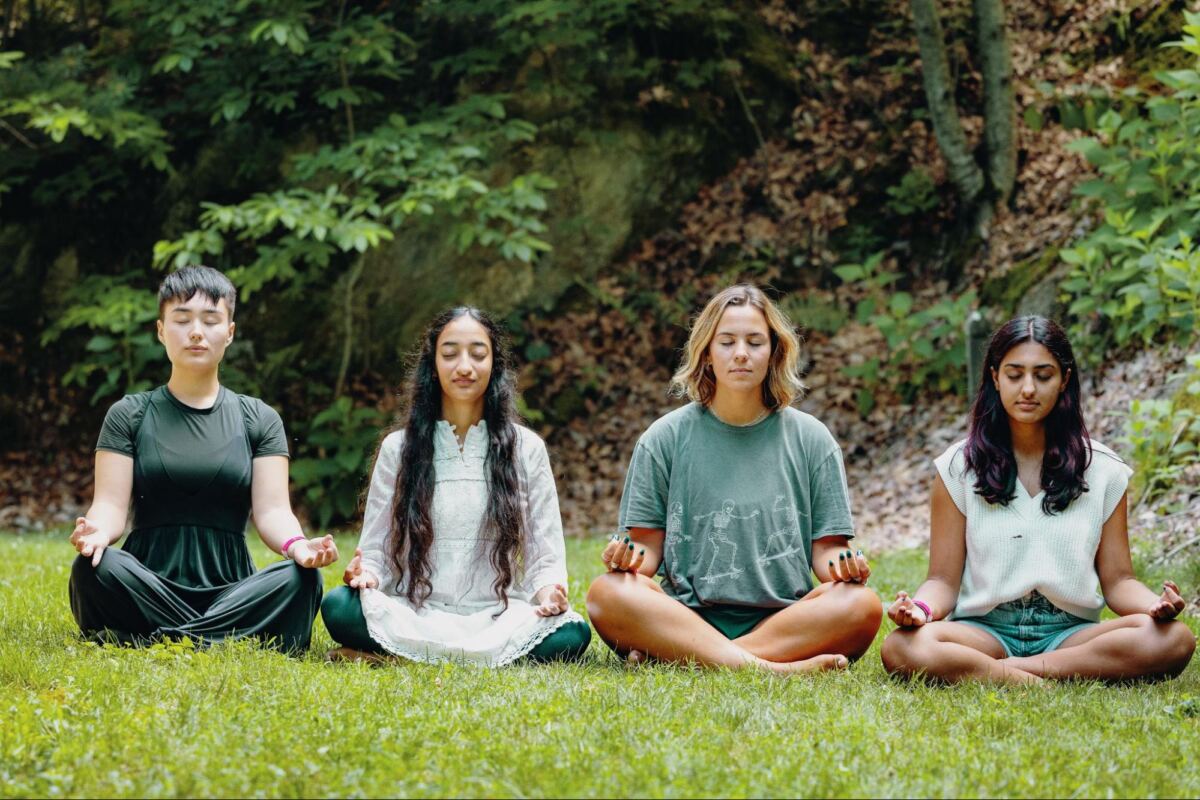It’s 11:47 p.m. in a small dorm room. A laptop screen glows in the dim light of a desk lamp, textbooks are stacked high, and an exam looms in the morning. Instead of pouring another cup of coffee, a student logs into a guided breathwork session. A group of students inhale together, pause, then exhale in slow unison. Within minutes, the tension in the room begins to melt away.
For decades, college culture was built on a badge of exhaustion, pulling all-nighters, mainlining caffeine, and pretending burnout was a sign you were doing it right. Gen Z is not buying it. This generation is quietly rebelling, trading overdrive for oxygen.
Breathwork Is Having a Moment
Breathing practices are showing up everywhere, from group workshops to quick guided sessions students join between classes. They offer an accessible, drug-free way to calm the mind and reset in just a few minutes.
For stressed-out students, these techniques are more than diversions. They are lifelines. And some are taking the practice further through structured, research-backed programs like SKY Campus Happiness.

What makes SKY different?
Developed by the Art of Living Foundation, the SKY Campus Happiness program gives students a short, powerful daily practice they can integrate anywhere: before a test, after a tough practice, or in the middle of a roommate conflict. The techniques are gentle on the nervous system but backed by decades of research from places like Yale and Stanford.
Students begin with a multi-day workshop, then carry the practice into their lives. Some even go on to advanced retreats or become certified teachers while still in college. It is not about fixing stress for a weekend. It is about having a tool they can use for the rest of their lives.
The Science of a Pause
At the heart of SKY Campus Happiness is Sudarshan Kriya, a rhythmic breathing practice shown to activate the parasympathetic nervous system, the body’s built-in calm mode. This shift helps lower stress hormones like cortisol and restore balance in just minutes. Paired with gentle yoga, opportunities for peer connection, and service activities, the program offers a holistic approach to well-being. More than 100 peer-reviewed studies have documented its benefits, including deeper sleep, reduced anxiety, and greater emotional resilience.
“It’s not about escaping stress. It’s about learning how to handle it,” says Maya, a junior at NYU.
Yale track athlete Davornne Lindo ’22 agrees. “Now that I have these techniques to help me, I would say my mentality is a lot healthier,” she says. “I can devote time to studying and not melting down. Races have gone better. Times are dropping.”
Her experience resonates far beyond the campus track. Former professional basketball player Bronson Koenig discovered SKY after years of intense pressure in elite athletics. He says the breathing practices helped him find a deeper sense of calm and focus, both on and off the court. “It’s a tool I can take anywhere, into any moment,” he says. Meeting Gurudev Sri Sri Ravi Shankar, the global humanitarian behind SKY, was for him both humbling and inspiring, deepening his commitment to the practice.

From Viral to Vital
Today, SKY Campus Happiness is offered at more than 145 colleges across the U.S., driven by student volunteers and designed for students, administrators, faculty, and staff. Workshops foster community, the kind that exists offline, eye-to-eye, not just screen-to-screen.
For a generation fluent in burnout, stillness can feel radical. Whether it is a quick reset before a test or a lifelong breathing practice that reshapes an athlete’s career, the quiet rebellion is here, and it begins with something as simple as the breath.

